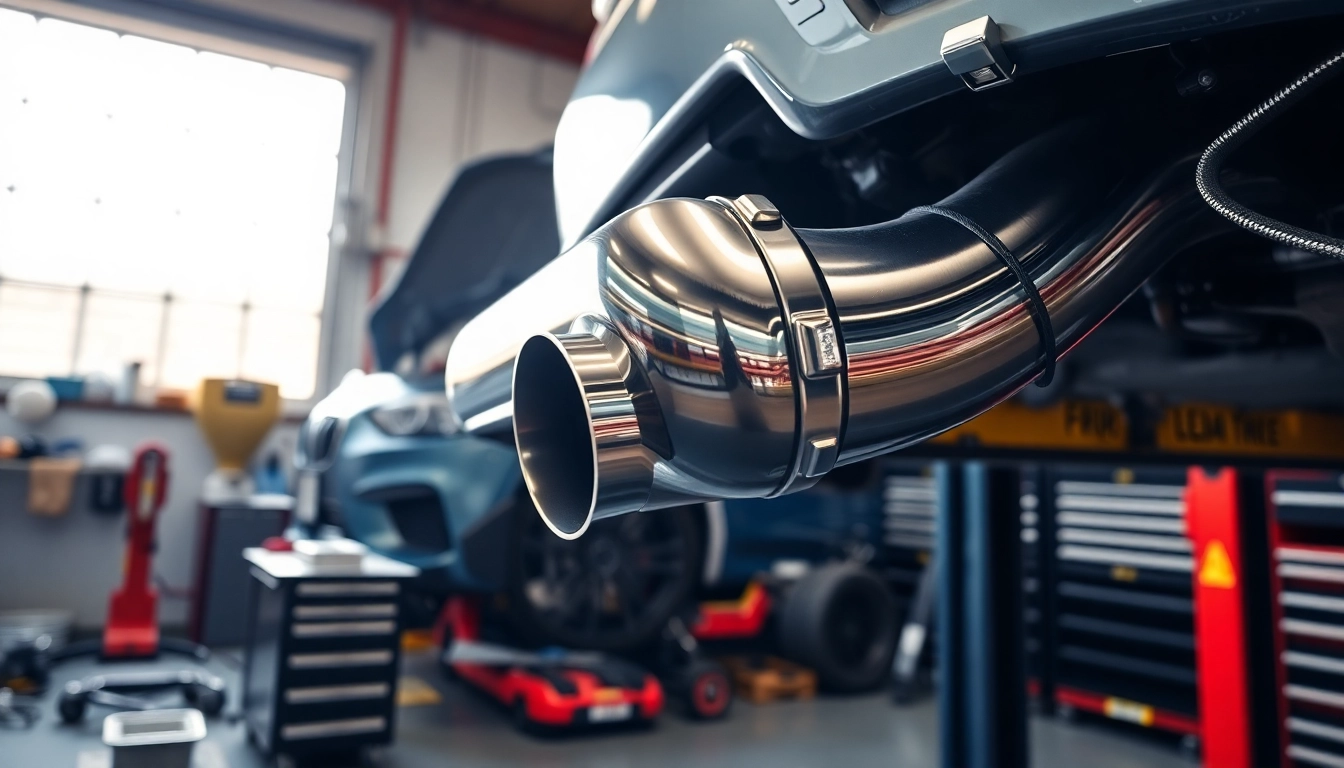
Understanding Automatic Bioethanol Fireplaces
In an era where convenience and aesthetics matter as much as functionality, the automatic bioethanol fireplace stands out as a modern heating solution. Combining the warmth of a traditional fireplace with cutting-edge technology, these fireplaces serve not only as a practical means of heating but also as decorative focal points in homes. As their popularity grows, it’s essential to understand what makes them unique and the advantages they bring to contemporary living spaces.
What Is an Automatic Bioethanol Fireplace?
An automatic bioethanol fireplace is a type of fireplace that utilizes bioethanol fuel to create a clean, renewable flame. Unlike traditional wood-burning fireplaces that require extensive installation, chimneys, and regular maintenance, automatic bioethanol fireplaces are designed for ease of use and efficiency. They operate using electronic controls that automate the ignition process, allowing the user to manage the fireplace through remote controls or even smart home systems.
These fireplaces are often equipped with built-in safety features, including automatic shut-off mechanisms, flame height adjustments, and control sensors that monitor the operation and safety of the unit. Such features not only enhance user convenience but also ensure added safety in homes.
Benefits of Choosing Automatic Over Manual
One of the most significant advantages of automatic bioethanol fireplaces is their convenience. Manual fireplaces require users to light the fire manually, which can be cumbersome and potentially dangerous. In contrast, automatic models provide:
- Remote Control Operation: Users can ignite or extinguish the flame with the push of a button, minimizing physical effort and risk.
- Programmable Features: Many automatic models allow users to set timers or control flame intensity through a smartphone app or home automation system.
- Enhanced Safety: Automatic bioethanol fireplaces often come with sensors that detect when the fire is unstable or in an unsuitable condition for burning.
- Cleaner Operation: With reduced soot and no smoke, these fireplaces are ideal for indoor use without the need for extensive ventilation systems.
- Environmentally Friendly: Since they use renewable bioethanol fuel, they produce significantly less CO2 than traditional fireplaces, making them a greener choice.
Eco-Friendly Features and Safety Measures
The eco-friendliness of bioethanol fireplaces is of paramount importance in today’s climate-conscious society. Bioethanol is derived from the fermentation of sugars found in plants, making it a renewable resource. Here are some eco-friendly features and safety measures associated with automatic bioethanol fireplaces:
- Low Emissions: As a clean-burning fuel, bioethanol produces minimal emissions compared to fossil fuels, resulting in a smaller carbon footprint.
- Built-in Safety Sensors: Automatic models come equipped with sensors that monitor for any dangerous situations, providing alerts or automatically shutting down the fireplace when conditions become hazardous.
- Non-toxic Flames: The flames emitted by bioethanol are free of toxic fumes, which is beneficial for indoor air quality.
- Recyclable Materials: Many units are constructed from durable, recyclable materials, further minimizing their environmental impact.
How to Choose the Right Automatic Bioethanol Fireplace
Choosing the right automatic bioethanol fireplace involves considering several factors to ensure that the selected model meets both aesthetic desires and functional requirements. Here’s what to think about before making a purchase.
Factors to Consider Before Purchase
When selecting an automatic bioethanol fireplace, consider the following factors:
- Space Availability: Measure the area where you intend to install the fireplace. Different models come in various sizes, and some may be designed for wall mounting while others are freestanding.
- Design and Aesthetic: Choose a model that complements the décor of your room, considering materials, colors, and style. Automatic fireplaces come in sleek modern designs as well as traditional styles.
- Fuel Capacity: Look for a model that has a sufficient fuel capacity to meet your heating needs without the need for constant refueling.
- Flame Adjustment Features: Some models allow for adjustable flame sizes, which can be useful for controlling heat output and ambiance.
- Brand Reputation and Warranty: Research well-reviewed brands and check warranty options to ensure you’re investing in a quality product.
Popular Styles and Designs
The market offers a wide range of designs for automatic bioethanol fireplaces, catering to various tastes and interiors. Here are some popular styles:
- Wall-Mounted Fireplaces: These are perfect for saving floor space and can function as art pieces, bringing a modern touch to your living space.
- Tabletop Models: Ideal for small areas, these compact fireplaces add a unique aesthetic and can be moved easily.
- Freestanding Fireplaces: These models provide a traditional fireplace feel and can be placed centrally within a room for maximum ambiance.
- Inserts for Existing Fireplaces: Converting an old wood-burning fireplace with an automatic bioethanol insert can breathe new life into it while eliminating the need for chimney upkeep.
Customer Reviews and Recommendations
Reading customer reviews can provide invaluable insight into the actual performance and satisfaction levels of different models. Customers often discuss aspects such as ease of installation, maintenance needs, safety functionality, and overall ambiance created by the fireplace. Seek out reviews from reliable sources and look for mentions of durability, customer support, and how well the unit functions over time.
Installation and Maintenance Tips
Once you have selected the perfect automatic bioethanol fireplace, proper installation and maintenance will ensure it operates efficiently and lasts for many years.
Easy Installation Guide for Beginners
Installing an automatic bioethanol fireplace is typically a straightforward process, but it’s essential to follow the manufacturer’s instructions closely. Here’s a simplified installation guide:
- Choose the Location: Select a flat, stable surface that adheres to safety recommendations for clearance and proximity to flammable materials.
- Secure the Unit: If wall-mounted, ensure that you use appropriate anchors for the fireplace’s weight. Freestanding models should be placed securely on a surface.
- Fuel Preparation: Fill the fuel tank according to the instructions using bioethanol fuel. Avoid overfilling and ensure the area is well-ventilated.
- Testing the System: Turn on the fireplace using the remote control or app. Observe the flames and safety sensors to ensure everything functions correctly.
- Final Adjustments: Make any necessary adjustments to the flame size and ensure that safety features are operational.
Regular Maintenance Practices to Ensure Longevity
Maintaining your automatic bioethanol fireplace is crucial for both safety and performance. Here are some key maintenance practices:
- Regular Cleaning: Clean the unit as recommended to prevent soot buildup, ensuring the flame burns brightly and efficiently.
- Fuel Checks: Regularly check and refill the bioethanol fuel before it runs low to avoid any interruptions in use.
- Inspect Safety Features: Periodically check the operational status of safety sensors and features to ensure they are functioning properly.
What to Avoid When Using Bioethanol Fireplaces
While bioethanol fireplaces are relatively safe, there are some common pitfalls to avoid:
- Overfilling the Fuel Tank: Always adhere to manufacturers’ recommendations regarding fuel amounts to prevent flare-ups.
- Using Incorrect Fuels: Never use fuels that are not explicitly recommended, as they can lead to hazardous conditions.
- Neglecting Ventilation: Ensure the area remains well-ventilated, even with low emissions, as excess humidity from combustion may accumulate.
Comparative Costs and Efficiency
When evaluating the cost-efficiency of an automatic bioethanol fireplace, several factors come into play, including purchase price, fuel costs, and maintenance expenses.
Cost Analysis: Bioethanol vs. Traditional Heating
Bioethanol fireplaces can represent a compelling alternative to traditional heating systems. The upfront cost of an automatic bioethanol fireplace varies based on design and technology, typically ranging from a few hundred to several thousand dollars. In contrast, traditional fireplaces can incur additional costs related to chimney installation, wood storage, and maintenance.
In terms of operational costs, bioethanol fuel may be more expensive than natural gas or electric heating; however, the unique ambiance and aesthetic enhancement justify the investment for many homeowners. They tend to provide a cozy atmosphere that traditional heating methods lack, particularly during social gatherings.
Flame Control and Efficiency Ratings
The efficiency of an automatic bioethanol fireplace can be gauged by its ability to produce an effective heat output relative to its fuel consumption. The most efficient units will provide ample warmth without excessive fuel usage, while flame control features allow users to adjust the intensity, making them customizable for various occasions.
Furthermore, most modern bioethanol fireplaces are designed to maximize fuel efficiency, often boasting features such as adjustable burn times and temperature settings.
Understanding Fuel Sources and Costs
Bioethanol fuel is available at various retailers and online, typically costing around $1–$3 per hour of burn time, depending on the fireplace’s size and flame setting. When purchasing fuel, consider sourcing it from reputable suppliers to ensure quality. Additionally, understand that your frequency of use will directly impact the yearly running costs associated with the fireplace.
Creating the Perfect Ambience with Bioethanol Fireplaces
The aesthetic appeal of a bioethanol fireplace is among its most celebrated attributes. By strategically placing and decorating around the fireplace, you can easily enhance any room’s ambiance.
Design Ideas for Different Rooms
Bioethanol fireplaces can be integrated into various spaces within a home, each with its unique design considerations:
- Living Rooms: Use freestanding or wall-mounted models as central features, flanked by comfortable seating to create a cozy gathering space.
- Bedrooms: A small tabletop fireplace can enhance intimacy; ensure it is on a secure, flat surface away from any flammable items.
- Outdoor Patios: Consider weather-resistant models for outdoor spaces, allowing you to enjoy warmth during chilly evenings.
- Basements or Home Theatres: Create a relaxing escape by combining soft lighting and a bioethanol fireplace for a movie night.
Fashionable Décor Tips to Match Your Fireplace
Integrating a bioethanol fireplace into your home isn’t just about function; it’s about form too. Here are some décor tips to enhance the look:
- Accessorize With Natural Elements: Incorporate wood, stone, or plant accents that complement the fireplace and bring nature indoors.
- Use Soft Textiles: Surround the fireplace with plush cushions, throws, and rugs to add a layer of comfort and coziness.
- Artwork Displays: If wall-mounted, use art pieces as the backdrop to create a unique feature wall that draws the eye.
Hosting Gatherings Around Your Bioethanol Fireplace
Bioethanol fireplaces can transform the hosting experience. The warm, inviting flames create a perfect backdrop for gatherings, offering style and comfort without worrying about smoke or soot.
Consider setting up seating arrangements that encourage conversation and provide easy access to the fireplace. Using ambient lighting in conjunction with the fireplace enhances the mood even further, promoting an inviting atmosphere for family and friends alike.







